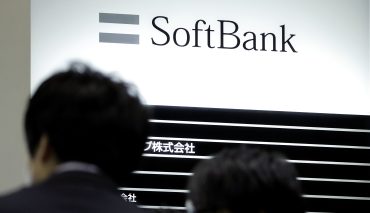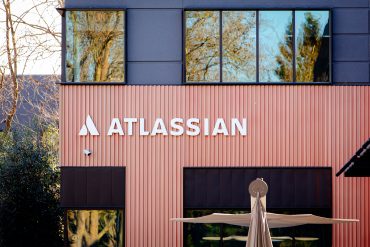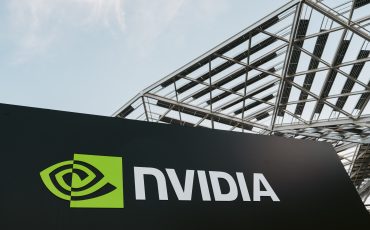
- AI Investment
- Workforce Automation
SoftBank Vision Fund Cuts 20% of Staff Amid AI Investment Shift
5 minute read

Vision Fund layoffs signal SoftBank’s aggressive push into artificial intelligence infrastructure as quarterly profits reach $2.87 billion
Key Takeaways
- SoftBank cuts 20% of Vision Fund staff globally to redirect resources toward artificial intelligence investments, marking the third round of layoffs since 2022 despite the fund’s strongest quarterly performance in four years.
- Vision Fund reports $2.87 billion profit in Q1 2025, its best results since 2020, driven by gains in NVIDIA, Alibaba, and other tech holdings as SoftBank shares surge 36% this year.
- $500 billion Stargate partnership with OpenAI represents SoftBank’s pivot from broad venture capital investing to concentrated AI infrastructure bets, following $9.7 billion invested in OpenAI over the past year.
Introduction
SoftBank Group Corp. eliminates nearly 20% of its Vision Fund workforce globally as the Japanese conglomerate shifts resources toward ambitious artificial intelligence projects. The strategic reduction affects over 300 employees worldwide, marking a decisive pivot from diversified startup investments to concentrated AI infrastructure bets.
The layoffs come despite the Vision Fund’s strongest financial performance since 2021, underscoring founder Masayoshi Son’s commitment to large-scale AI initiatives. This workforce reduction represents the third round of cuts since 2022, but unlike previous reductions driven by losses, these layoffs follow exceptional quarterly profits exceeding $2.8 billion.
Key Developments
SoftBank announced the workforce reduction through an internal memo, with a company spokesperson confirming the strategic realignment toward AI investments, according to Reuters. The Vision Fund employs more than 300 people across global offices, with affected employees representing positions across investment teams and operational functions.
The timing coincides with SoftBank’s involvement in the proposed $500 billion Stargate project alongside OpenAI to construct extensive U.S. data center networks. This initiative exemplifies Son’s strategy of making concentrated, high-conviction investments rather than maintaining broad portfolio diversification across multiple sectors.
Recent months have seen SoftBank accelerate AI-focused investments, including significant stakes in semiconductor companies and infrastructure projects. The company maintains substantial positions in NVIDIA Corporation and has invested $9.7 billion in OpenAI through Vision Fund 2, which manages approximately $65.8 billion in total assets.
Market Impact
SoftBank shares have surged over 36% in 2025, adding nearly $37 billion to the company’s market valuation. The Vision Fund’s Q1 2025 profit of $2.87 billion reversed a $1.19 billion loss from the previous year, driven primarily by gains in public technology holdings.
The fund’s value increased by $4.8 billion in the latest quarter, with significant contributions from NVIDIA, South Korean e-commerce firm Coupang, and various Indian technology companies. These gains reflect broader market enthusiasm for AI-related investments and semiconductor manufacturers.
Financial markets have responded positively to SoftBank’s strategic clarity and operational efficiency measures. Investor confidence has been restored following years of volatility associated with high-profile investment failures including WeWork and Didi.
Strategic Insights
The workforce reduction signals a fundamental shift in technology investment strategies, moving away from the previous era’s sprawling venture capital portfolios toward concentrated, high-stakes bets. SoftBank’s approach reflects broader industry trends favoring operational efficiency and strategic focus over portfolio diversification.
This pivot positions SoftBank to build a vertically integrated ecosystem spanning semiconductor design, data center infrastructure, and AI model development. The strategy leverages the company’s crown jewel asset, chip designer Arm, alongside new investments in companies like Graphcore and Ampere Computing.
The concentration strategy amplifies both potential rewards and risks, as SoftBank increases exposure to capital-intensive, rapidly evolving sectors. The approach mirrors Son’s historical investment philosophy of making massive, transformative bets on emerging technologies.
Expert Opinions and Data
Industry analysts express cautious optimism about SoftBank’s strategic realignment, noting the potential for substantial long-term returns from AI infrastructure investments. However, they emphasize increased volatility risks associated with concentrated portfolio positioning in emerging technology sectors.
Market observers highlight the timing significance, as the workforce reduction follows exceptional financial performance rather than losses that drove previous layoffs. This distinction suggests confidence in strategic direction rather than defensive cost-cutting measures.
Financial data supports the strategic pivot, with SoftBank maintaining approximately 4 trillion yen ($27 billion) in cash reserves as of August 2025. This strong financial position enables the company to pursue capital-intensive AI infrastructure projects while maintaining operational flexibility.
Conclusion
SoftBank’s Vision Fund workforce reduction represents a calculated strategic pivot toward concentrated AI investments, supported by exceptional recent financial performance and substantial cash reserves. The move aligns with broader technology industry trends favoring operational efficiency and high-conviction investment strategies.
The company’s focus on AI infrastructure and semiconductor investments positions it for potential significant returns while increasing exposure to rapidly evolving, capital-intensive sectors. This strategic shift reflects founder Masayoshi Son’s renewed commitment to transformative technology bets that could define the next decade of digital innovation.







